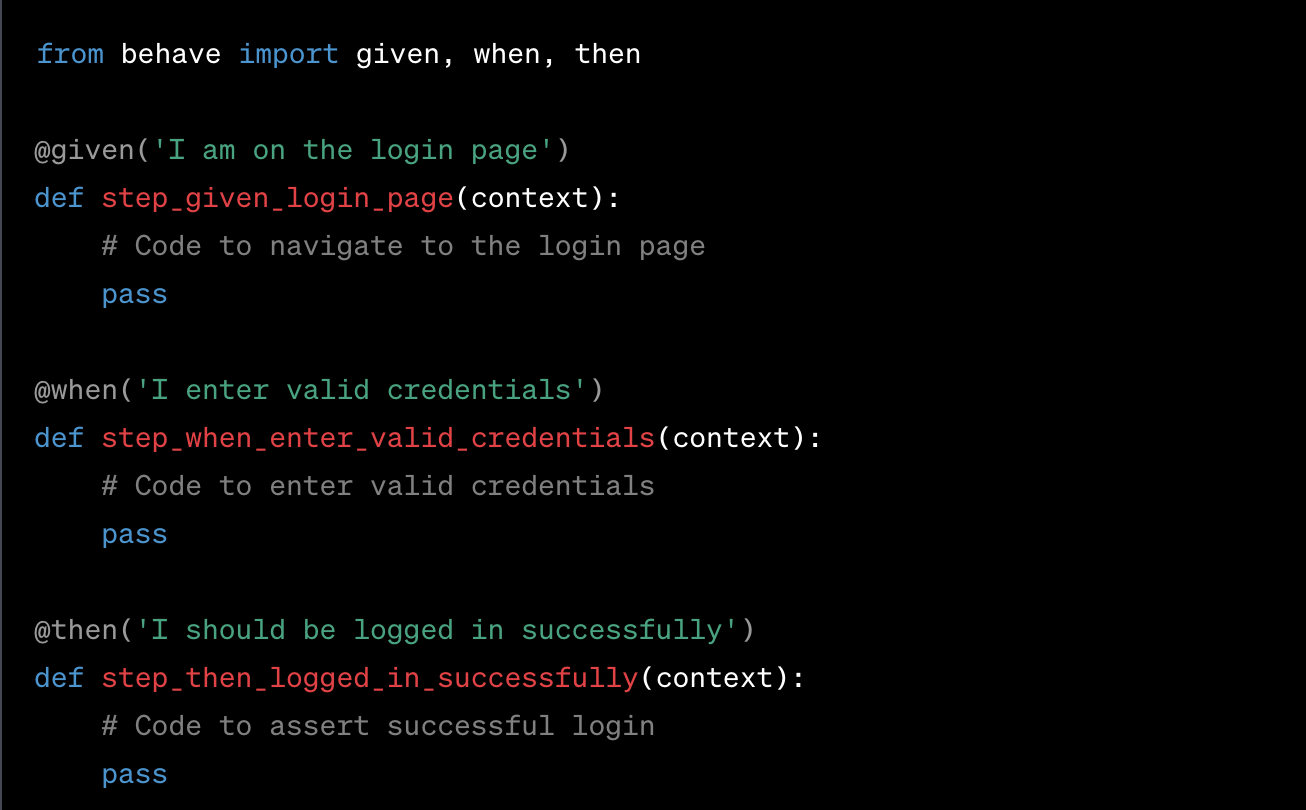Test Automation with Python and Behave
In today's fast-paced software development landscape, test automation plays a crucial role in ensuring software quality, accelerating time-to-market, and delivering exceptional user experiences. This comprehensive guide explores the intricacies of Python and Behave, providing detailed information, practical code examples, and best practices to help organizations implement effective test automation strategies.
Understanding Behave and BDD
Behavior-driven Development (BDD) is an agile software development methodology that emphasizes collaboration, communication, and alignment among all stakeholders involved in the software development process. Behave, a popular Python library, is specifically designed to facilitate BDD-style testing and test automation. It allows teams to define test scenarios in a human-readable format using Gherkin syntax, enabling effective communication and understanding of software behavior across the entire team.
In BDD, the focus is on defining the desired behavior of the software through the creation of executable specifications. Behave allows the translation of these specifications into automated tests, ensuring that the software functions as intended and meets the desired outcomes. By adopting Behave for test automation, Cooperative helps organizations bridge the gap between technical and non-technical team members, fostering collaboration and clarity in the testing process.
Behave and BDD offer numerous benefits that contribute to the improvement of software quality assurance practices.
a. Enhanced Collaboration:
Behave enables effective collaboration among team members, including developers, testers, and stakeholders. By utilizing a common language and structured syntax, Behave facilitates clear communication, shared understanding, and alignment on software behavior, leading to more accurate and comprehensive testing.
b. Business-Focused Test Scenarios:
With Behave, test scenarios are written in a language that is easily understandable by both technical and non-technical stakeholders. This promotes the creation of test scenarios that align with the business goals and requirements, ensuring that testing efforts focus on delivering value to the end-users.
c. Improved Test Coverage:
Behave's Gherkin syntax promotes the creation of comprehensive and well-structured test scenarios. By defining test scenarios in a Given-When-Then format, Cooperative can ensure that all critical aspects of the software's behavior are covered, resulting in a higher level of test coverage and reduced risk of overlooking essential functionalities.
d. Better Documentation:
Behave test scenarios written in Gherkin syntax serve as executable documentation for the software's behavior. These scenarios act as living documentation, providing a clear understanding of the expected software behavior for the entire team, including future team members who join the project.
Setting Up the Test Environment
Before diving into test automation using Behave, it's essential to set up your test environment properly. Follow these steps to get started:
a. Creating a Behave Project Structure
To organize your Behave test suite effectively, follow these steps:
Create a new directory for your Behave project:
Navigate into the project directory:
Initialize a Behave project using the command:
This will generate the following directory structure:
The features directory is where you will store your feature files written in Gherkin syntax, and the steps directory is where you will define your step definitions. The environment.py file allows you to define environment-specific configurations or setup code, while the behave.ini file contains configuration options for Behave.
b. Configuring Dependencies:
Ensure that you have the necessary dependencies installed to run Behave and Python-based test automation. This typically includes Python itself, the Behave library, and any additional libraries or tools you may need for your specific testing requirements.
c. Set Up WebDriver for Web Application Testing
If you're performing web application testing with Behave, you'll need to set up a WebDriver compatible with the browser you intend to automate. Popular options include Selenium WebDriver for cross-browser testing and Appium for mobile web testing.
Ensure that the appropriate WebDriver executable is installed and accessible in your system's PATH.
Writing Feature Files and Implementing Step Definitions
Feature files act as the backbone of BDD tests, defining the desired behavior of the software. They are written in Gherkin syntax and consist of scenarios, steps, and tags. Step definitions bridge the gap between feature files and automation code, defining the actions and assertions corresponding to each step.
Example Feature File (login.feature):
Example Step Definitions (login_steps.py):
Leveraging Python Libraries for Test Automation
Python's rich ecosystem of libraries provides valuable resources for test automation. Here are some commonly used Python libraries in test automation:
a. Selenium WebDriver:
Selenium WebDriver enables interaction with web elements, facilitating web application testing.
b. Requests:
The Requests library simplifies HTTP requests and responses, making API testing seamless.
Best Practices for Effective Test Automation
To maximize the effectiveness of test automation, consider the following best practices:
a. Test Case Design: Design test cases that cover critical functionalities, edge cases, and user workflows. Prioritize test cases based on risk and business impact.
b. Test Data Management: Ensure proper management of test data to enable reliable and repeatable tests. Apply techniques such as data masking, data anonymization, and synthetic data generation.
c. Test Environment Management: Maintain separate environments for development, testing, and production to prevent interference and ensure accurate test results.
d. Continuous Integration and Continuous Deployment (CI/CD): Integrate test automation into your CI/CD pipeline to automate the execution of tests with each code change and ensure early detection of issues.
e. Test Reporting and Analysis: Generate comprehensive test reports with detailed insights into test execution results. Analyze test data to identify patterns, trends, and areas for improvement.
f. Test Maintenance: Regularly update and maintain your test automation framework to accommodate changes in the application under test and optimize test execution efficiency.
Test automation using Python and Behave empowers organizations to achieve elevated software quality, accelerate time-to-market, and deliver exceptional user experiences. By following best practices, leveraging Python libraries, and adopting a behavior-driven approach, teams can streamline their testing efforts and achieve higher efficiency and accuracy in their software development process.
At Cooperative, we specialize in providing expert test automation services, combining our deep understanding of Python, Behave, and modern testing methodologies. With our extensive experience, we can help you implement effective test automation strategies tailored to your unique needs, revolutionizing your software testing standards and propelling your business forward.










